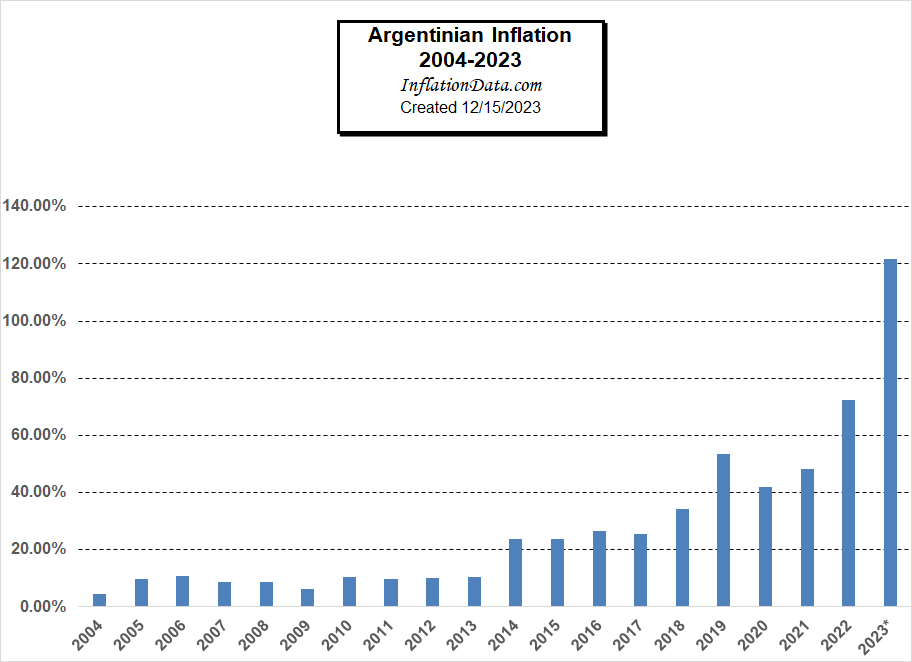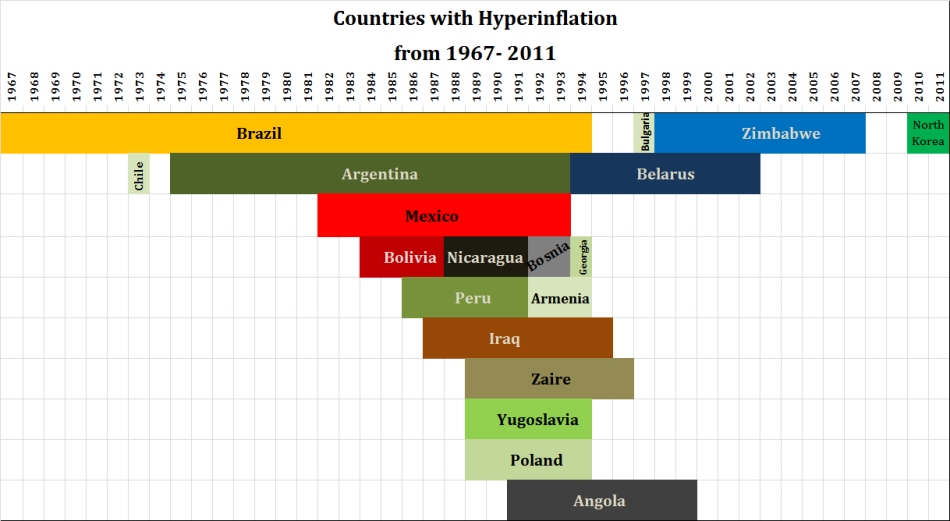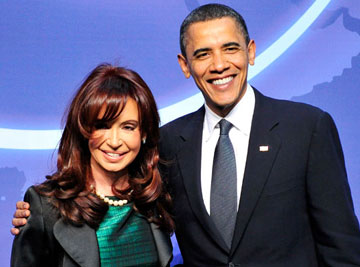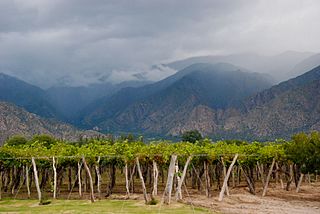As the new President of Argentina mulls the idea of dollarization to reduce Argentinian inflation we look at “What is Dollarization? ” and “Will it help Argentina?”
According to Reuters, “Argentina’s annual inflation rate hit 161% in November… the monthly inflation was rate 12.8% in November alone”.
Argentina’s new President Javier Milei campaigned on the promise of fixing Argentina’s economic crisis, and on Tuesday his government announced a more than 50% devaluation of the local peso currency plus sharp spending cuts.
| Annual Inflation Rate in Argentina 2004-2023 | |
| 2004 | 4.42% |
| 2005 | 9.64% |
| 2006 | 10.90% |
| 2007 | 8.83% |
| 2008 | 8.59% |
| 2009 | 6.27% |
| 2010 | 10.46% |
| 2011 | 9.78% |
| 2012 | 10.04% |
| 2013 | 10.62% |
| 2014 | 23.90% |
| 2015 | 23.90% |
| 2016 | 26.50% |
| 2017 | 25.68% |
| 2018 | 34.28% |
| 2019 | 53.55% |
| 2020 | 42.02% |
| 2021 | 48.41% |
| 2022 | 72.43% |
| 2023* | 121.67% |
*2023 Partial Year Average
International Monetary Fund (IMF) Projections
The IMF is projecting a gradual decline in Argentinian Inflation over the next few years (even without dollarization). But 32.47% inflation is nothing to dream about. With 32.47% inflation prices double in just over 3 years (of course with inflation over 100% prices double in less than one year).
| Argentinian Inflation Projected by IMF | |
| 2024* | 93.70% |
| 2025* | 54.12% |
| 2026* | 42.13% |
| 2027* | 37.14% |
| 2028* | 32.47% |
*Projected Inflation
From the following chart, we can see that this isn’t the first time Argentina has struggled with hyperinflation. And the period from 1981 through 2000 saw many countries worldwide experiencing hyperinflation.
What is Hyperinflation? Contains a list of 27 examples of hyperinflation from ancient Egypt through North Korea in 2011.
One of Milei’s ideas for reducing inflation is “Dollarization”. So, what is Dollarization? And how does it work?
What is Dollarization?
Simply put dollarization is when a country decides to give up the power of printing their own currency and starts using U.S. greenbacks instead. It’s like giving your parents charge of your credit card. They may not be the best money managers, but they are certainly better than you are. Three other Latin American countries have already done this, Panama, Ecuador and El Salvador when they faced their own currency crisis.
Panama has been on the U.S. dollar since 1904 (except for coins). Ecuador adopted the U.S. dollar in the year 2000. Dollarization has helped control hyperinflation, but dollarization has its opponents as well. Some oppose it on purely nationalistic grounds because it means giving up some sovereignty since you no longer control your own currency. But for countries that have repeatedly proven that they can’t control their spending without outside constraints, that lack of sovereignty can be a good thing. Another down-side of dollarization is the lack of “seigniorage”.
Seigniorage is the difference between the face value of money—both paper bills and coins—and what it costs to produce it.
In other words, the government makes a profit on printing money. Since it only costs a few cents to print money the difference can be huge depending on the denomination of the bill. As countries switch to the dollar the U.S. may choose to split the seigniorage profit with the local government thus infusing the local government with additional capital as well. The local government will then begin paying government salaries in U.S. dollars as one method of introducing dollars into the economy. It may also allow conversion of the old currency into U.S. dollars at a fixed rate for a limited time.
In addition to fending off hyperinflation due to the local government’s lack of restraint, dollarization can encourage international businesses to take advantage of the more stable currency which can help the local economy to develop. According to the IMF, “dollarized countries seem to have maintained their fiscal position in check and a stronger fiscal stance than the rest of the developing and emerging market countries.” In other words, having a stable currency has helped developing countries more than inflation. Which of course makes sense, except to Keynesian economists who believe inflation is beneficial. However, a 2021 article by Fitch Ratings notes that dollarization does not automatically serve as a hard constraint against unsatisfactory policymaking.
How does Dollarization Work?
Basically, the local government outsources their money management to the U.S. government. On the assigned day planeloads of U.S. greenbacks arrive and are introduced into the local economy.
Why would the U.S. government agree to give another country millions of dollars? Seigniorage! If it cost 2.8¢ to print a $1 bill the government makes 93.2¢ on every bill it prints. And the profits go up geometrically as the denomination goes up. It costs 8.6¢ to print a $100 bill so the profit is $99.91 on every bill they print. And these bills circulate outside the U.S. economy, so they have no effect on the U.S. economy.
Currently, there are 14 other countries (besides the three already mentioned) that use the U.S. Dollar as their currency. (Some are U.S. protectorates). They are:
| Country | Region |
|---|---|
| American Samoa | Polynesia |
| British Virgin Islands | Caribbean |
| Ecuador | South America |
| El Salvador | Central America |
| Guam | Micronesia |
| East Timor | Southeast Asia |
| Marshall Islands | Micronesia |
| Federated States of Micronesia | Micronesia |
| Palau | Micronesia |
| Northern Mariana Islands | Micronesia |
| Puerto Rico | Caribbean |
| Turks and Caicos Islands | Caribbean |
| Virgin Islands | Caribbean |
| British Indian Ocean Territory | Eastern Africa |
| Caribbean Netherlands | Caribbean |
| United States Minor Outlying Islands | Micronesia |
In addition, twenty other countries have pegged the value of their currency directly to the value of the U.S. Dollar but may have reserved some rights for themselves such as minting their own coinage. One of the surprises on this list is Cuba.
Currencies with a fixed exchange rate to the US dollar
| Currency | Rate |
|---|---|
| UAE Arabic dirham | 1 USD = 3.6725 AED |
| Netherlands Antillean guilder | 1 USD = 1.79 ANG |
| Aruba guilder | 1 USD = 1.79 AWG |
| Barbadian dollar | 1 USD = 2 BBD |
| Bahrain dinar | 1 USD = 0.376 BHD |
| Bermudian dollar | 1 USD = 1 BMD |
| Bahamian dollar | 1 USD = 1 BSD |
| Belize dollar | 1 USD = 2 BZD |
| Cuban peso | 1 USD = 1 CUP |
| Djibouti franc | 1 USD = 177.721 DJF |
| Eritrean nakfa | 1 USD = 10 ERN |
| Hong Kong dollar | 1 USD = 7.8 HKD |
| Jordanian dinar | 1 USD = 0.709 JOD |
| Kuwaiti dinar | 1 USD = 0.29963 KWD |
| Cayman dollar | 1 USD = 0.83333 KYD |
| Lebanese pound | 1 USD = 1,507.5 LBP |
| Omani rial | 1 USD = 0.38449 OMR |
| Panamanian balboa | 1 USD = 1 PAB |
| Qatari rial | 1 USD = 3.64 QAR |
| Saudi rial | 1 USD = 3.75 SAR |
| East Caribbean dollar | 1 USD = 2.7 XCD |
Zimbabwe’s Dollarization Experience
Zimbabwe adopted the U.S. Dollar in 2009 due to an episode of hyperinflation that rendered their local currency worthless. Unfortunately, their economy continued to stagnate primarily due to corruption, and despotism. So, they decided to revert back to their own currency in June 2019. Which of course did nothing to improve their economy except to reintroduce massive inflation. So, in 2023 they have instituted a gradual return to a dollarization. This year (2023), 77% of transactions were conducted in U.S. Dollars. Interestingly, Zimbabwe’s annual inflation as of November 2023 has dropped to “only” 21.6%.
The Ecuador and El Salvador Dollarization Experience
Before dollarization Ecuador’s annual inflation rate was about 40%, while El Salvador’s annual inflation rate was about 15%. After dollarization, both averaged 1.5% per year — about one fifth the rate of the rest of Latin America. For comparison, over the same period Argentina ran inflation of 39% per year.
When they dollarized, El Salvador had about half the average income as the rest of Latin America, and Ecuador was at one third. In the following 20 years, El Salvador grew about 30% faster than the rest of Latin America, while Ecuador grew two and a half times faster — almost 7% per year, which is “tiger” levels. Argentina, meanwhile, grew at just 0.5% per year.
Today, 20 years later, El Salvador and Ecuador both have unemployment rates at or under 4%. Argentina’s is 11.5% even according to official numbers.
You might also like:
- Hyperinflation in Turkey and Argentina
- Syria in the Throes of Hyperinflation (2013)
- What is Hyperinflation?
- Two Ways to Destroy the Economy: Hyperinflation and Central Planning
- Can Crypto Solve Venezuela’s Hyperinflation Problem?
- Hyperinflation: 5 Currencies that Self-Destructed
- Zimbabwe Hyperinflation and the U.S. Dollar
- Zimbabwean Hyperinflation Officially Estimated At 2.2 Million Percent (2008)
- Dollarization Dynamics (mit.edu)





